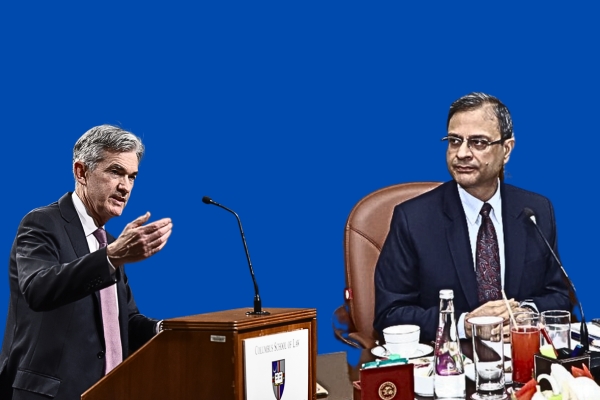.png)
The Monetary Power of Words in Central Bank Communication
Words have become one of the most powerful instruments in monetary policy, sometimes stronger than rate moves or liquidity operations.


Babuji K is a career central banker with 35 years at RBI in exchange rate management, reserve operations, supervision, and training.
August 25, 2025 at 9:23 AM IST
India’s External Affairs Minister S. Jaishankar, standing next to Russian Foreign Minister Sergey Lavrov in Moscow, once remarked that India was “perplexed” by US criticism of its energy trade with Russia. His choice of a single word, used with precision, carried both logic and diplomatic weight.
That moment captures a lesson central bankers know well: language is a policy tool in its own right. Carefully chosen words can shift financial markets, steer expectations, and achieve outcomes that might otherwise demand heavy use of traditional levers.
In modern central banking, communication has become a core policy instrument. Verbal interventions can move markets, influence behaviour, and even anchor long-term expectations.
The weight of words is seen in the way traders, economists, and policymakers parse every speech and statement for signals. Language, when used skilfully, can be as potent as interest-rate changes or balance-sheet actions.
Alan Greenspan’s “irrational exuberance” line in December 1996 is the textbook case. His phrase triggered immediate declines in stock markets across Tokyo, Hong Kong, Frankfurt, London, and New York, as traders read it as a sign of coming monetary tightening. Ironically, equities later rallied until the dot-com crash of 2000–2002, showing both the immediate impact and longer-term complexity of such interventions.
Closer home, then RBI Deputy Governor Y. V. Reddy used a single remark in August 1997 to cool markets during the Asian financial crisis. Addressing dealers in Goa, he noted that the rupee appeared overvalued on real effective exchange rate metrics. The currency promptly slipped from 31.75 to beyond 32.00, a correction achieved without expending foreign exchange reserves.
Perhaps the most dramatic instance came in July 2012, when ECB President Mario Draghi declared the bank would do “whatever it takes” to preserve the euro. Spanish and Italian bond yields collapsed, the euro stabilised, and a crisis was averted—all before a single euro of policy support was deployed. This remains the gold standard of central bank communication.
Word Power
Central bankers have also mastered strategic vagueness. Phrases such as “considerable time,” “extended period,” and “measured pace” deliberately withhold specifics while hinting at direction. The ever-present “data-dependent” stance signals flexibility without commitment. Similarly, terms like “calibrated tightening,” “symmetric target,” or “ample reserves” are designed to guide sentiment while keeping options open. The nuanced monetary policy preferences espoused by central bankers with constructive ambiguity are interpreted as "dovish" — supportive of a loose policy— or "hawkish" — supportive of a tighter policy — by many market participants.
These euphemisms have multiplied: “balance sheet normalisation” for asset sales, “terming out operations” for longer-maturity liquidity, or “orderly conditions” as a coded warning on currencies. Markets now trade as much on parsing tone and phrasing as on policy itself.
Recent experience shows the pitfalls. In 2021, US officials repeatedly described inflation as “transitory,” only to face criticism as price pressures proved persistent. Similarly, Jerome Powell’s 2018 comment that rates were “a long way from neutral” gained significance because of the strong growth backdrop, even though it initially caused limited volatility. Context, as much as words themselves, shapes outcomes.
For central banks, words are both shield and sword. They must manage expectations, guide behaviour, and maintain credibility while retaining policy flexibility. Too much clarity can box them in; too much ambiguity risks losing trust. The lesson is clear: in central banking, communication is no longer an accessory to policy but one of its most decisive instruments.
If rates and reserves are the hard tools of monetary policy, words are the soft power that shapes market belief. And belief, in the end, is what keeps the system stable.



